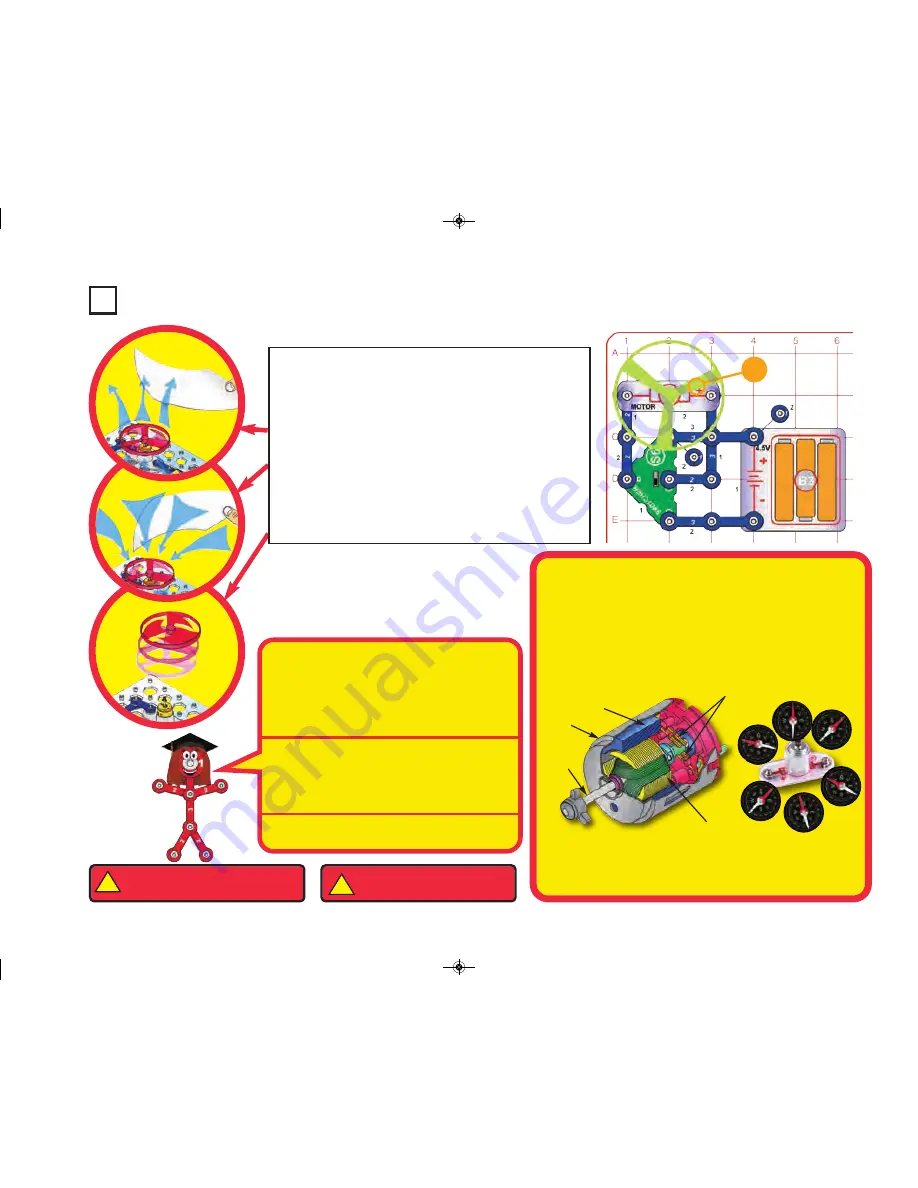
Switching circuits like this are commonly used to
control motors in products like remote-controlled
cars. Electronic controlled transistors are used in
place of the switches, and the motor drives the
wheels in the car.
Project 42
Propellor and Fan
Build the circuit as shown, and set the switcher (S6) to the mid-
dle position at first, then set it to the bottom position to spin the
fan. The fan blades suck in air around the motor (M1) and push
it straight up. Hold a sheet of paper above the motor, it will get
pushed up and away from the fan.
Flip the switcher to the top position now. The fan spins the
other direction and sucks in air from above and pushes it down
to the table. If the fan is spinning fast enough, then it will rise
into the air when you turn off the switcher (sometimes it may
fly off sooner due to vibrations). If you hold a sheet of paper
near the motor, it will get sucked into the fan. If the fan doesn’t
fly off, then turn the switcher on and off several times rapidly
when it is at full speed.
+
How does electricity turn the shaft in the motor? The answer is
magnetism. The motor is the opposite of an electromagnet. Moving
a magnet near a coil of wire can make a current flow in it (like the
electromagnet), but a current flowing can move a magnet.
Inside the motor is a coil of wire mounted on a shaft. The motor shell
has a magnet on it. When electricity flows through the coil of wire,
it repels from the magnet on the motor shell and the shaft spins. If
the fan is on the motor shaft then its blades will create airflow.
Magnet
Shaft
Power Contacts
Shell
To prove the motor has a magnet inside, move your compass
around it. The red needle will be attracted to one side but re-
pelled from the other.
Motors are used throughout our society to convert
electricity into mechanical motion.
Coil
When the motor is blowing air up, it is a fan - just
like the ones in your home. It will cool you off on
a hot day.
When the motor is sucking air in, it is a propeller
- just like the ones on helicopters or small air-
planes.
!
WARNING:
Moving parts. Do not
touch the fan during operation.
!
WARNING:
Do not lean over the motor.
-44-
SC_STEM1_manual_PRINT.qxp_Layout 1 7/13/17 4:43 PM Page 45
















































